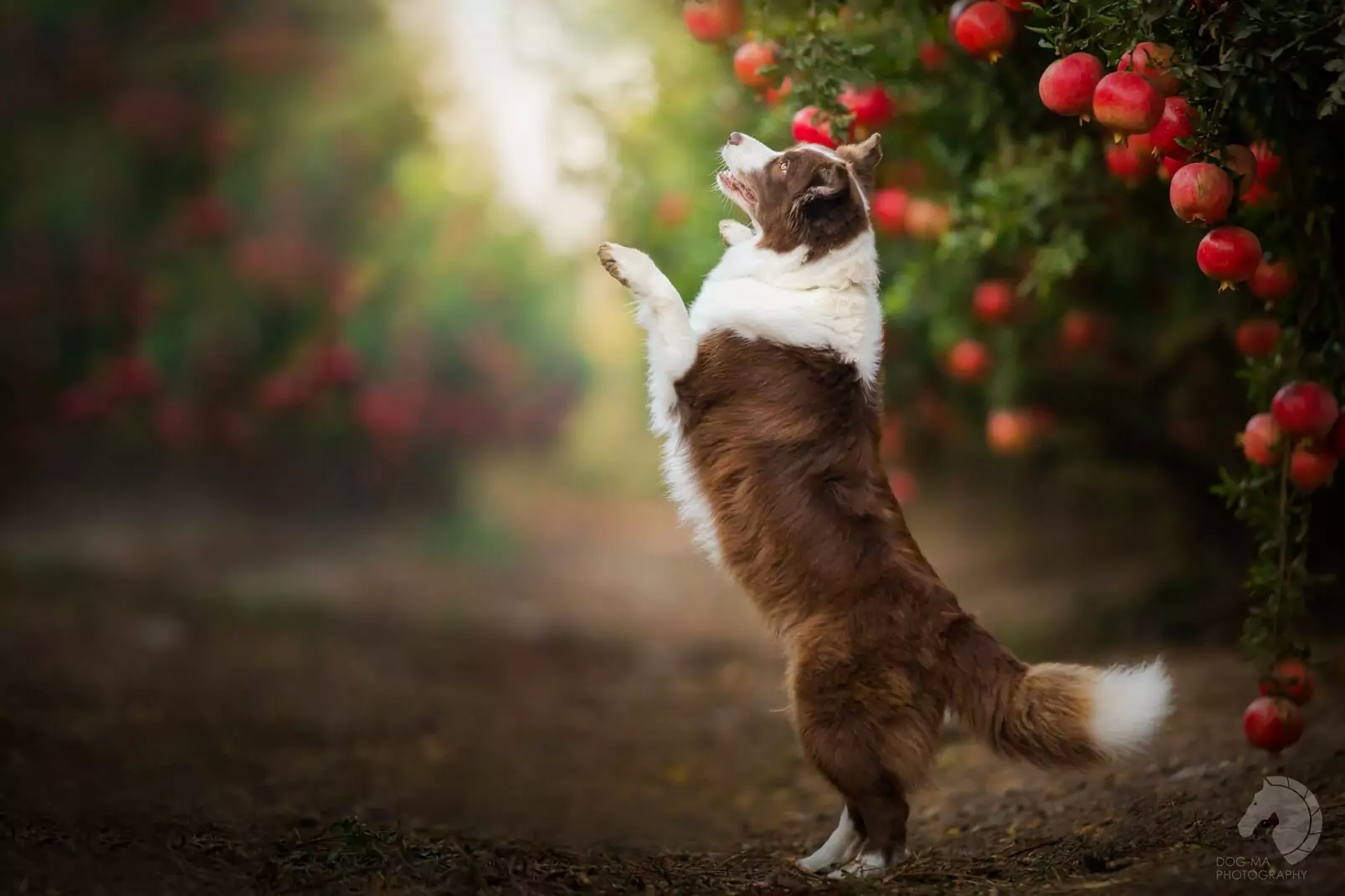Can dogs see colors? What colors can dogs see
2022-06-22
Can dogs see colors
Puppies can see colors, but they can recognize fewer colors than humans can. The only colors dogs can see are yellow, blue, and gray. This is because the two types of retinal cone cells on a dog's retina can recognize short- and medium- and long-wavelength light waves, and it is because dogs have fewer cone cells that they can see fewer colors.
Dogs have a high IQ and become loyal companions to humans. Some of the special features in dogs also make people feel very amazing. Dogs like to exercise and smell, can do a lot of things within their reach, especially loved by people. Many people say that dogs can't see colors is this true?
Dogs can see color but can only see three colors, from three aspects to understand the dog's vision:.
1, the dog can only see things within five meters.
2, the dog is not sensitive to harsh bright light.
3, the dog's eyes can only see three colors.
The dog's eyes are three to four times more powerful than human vision at night, but during the day, its vision is very weak, even to the harsh light is not sensitive.
The dog's ability to see, from three specific aspects to understand.
The first aspect, dogs are actually considered nearsighted, they are generally beyond the five or six meters of things and faces can not be clearly identified.
The second point, the dog is not sensitive to bright light at all, even if very blinding people have felt open eyes, but the dog has no feeling.
The third aspect, the dog sees less color, can only see yellow blue and purple. Outside of the three colors, the dog is not able to identify.
Each animal has its own strange functions, and because of them they can interact and communicate well with humans, as well as do what they can.

What colors can dogs see
Dogs can see blue, white, gray, and different shades of the above colors, i.e., various shades of gray, yellow, blue, purple, etc. Dogs can distinguish and are even better than humans at these color discriminations. Red for dogs, on the other hand, is dark, so they can not see red. At the same time green for them is white, so they are actually red-green blind.
What colors are dogs most sensitive to
Dogs don't have a favorite color because dogs don't see the world in color. Dogs have very few visual cone cells, so dogs can only see yellow, blue and gray. Red is dark to dogs, green is white to dogs, and dogs see grass as white. So dogs see the world is cool, just have the color light and dark distinction, so there is no dog like which color said.
Humans see the world in color because we have (usually) three types of color differentiating cells in our eyes. These cells are scientifically called "color receptors", or chromophores for short. Dogs also have three types of chromophores. So they are very sensitive to red, green and blue light and are able to combine the three colors they see with different intensities and proportions. So, dogs can also appreciate the full color world as we know it.
However, the color in the eyes of some people is different from that of the average person, and they cannot distinguish between certain colors, or what we call color blindness. Two of the more common types are red-green (red-green blindness) and blue-yellow (blue-yellow blindness). Dogs, on the other hand, have color vision very similar to people who are red-green colorblind, although there are some differences. Dogs are less sensitive to changes in grayscale in humans and only about half as sensitive to changes in brightness.
According to the latest analysis by scientists, dogs are actually not colorblind. Dogs' eyesight would have been quite good, but dogs' eyesight and human eyesight are somewhat different. Dogs also have color vision in their eyes, except that color doesn't matter much to dogs. In the human retina, there are rod-shaped and cone-shaped visual cells. The former is used to distinguish between light and dark (black and white) in the environment, and the latter is used to distinguish between colors in the environment. Dogs have more rod-shaped cells than cone-shaped ones, so they can still see clearly in low light environments.
In addition to color, there are some characteristics of dog vision. According to scientific research, dogs tend to have some degree of myopia in their eyes. However, dogs tend to be better than humans in certain visual abilities. For example, dogs are more sensitive to distance, 10 to 20 times more sensitive than humans. Their eyes are well suited for hunting during dawn and dusk, and the combination of their athletic nature and twilight sensitivity, as well as their wider peripheral vision than humans, makes dogs' eyes ideal for hunting fast-moving creatures.
What colors are dogs generally afraid of
As for how many colors they can distinguish, they still have a sense of color, but that's not the key to distinguishing objects, they are still used to and good at using their nose to distinguish objects. It is a misconception to think that a dog's eyes are only black and white. But if by color blindness you mean that dogs can only see part of the visible spectrum compared to human vision, then you are right, dogs do have color blindness. Scientists have some ways to confirm this point of view. But it is important to understand how dogs see things first. Dogs have two types of color photoreceptors, or cone cells, in their retinas that discriminate between short wavelengths and medium and long wavelengths of light, which are shades of blue (short wavelengths) and red and yellow (long wavelengths). Humans, on the other hand, have three types of cone cells that allow us to see all colors in the visible spectrum. Because dogs have only two types of cone cells, they can distinguish colors no differently than red-green-blind humans. Of course, color-blind humans can still see many different colors, so scientists believe that dogs can also see so many colors. How do scientists know this? One way is to put a colored light source into the puppy's eyes and analyze the spectrum or pattern of the reflected light, and then compare the results with the results obtained from the same light source into the human eye. Another way to study canine vision is to let puppies "tell" scientists what they see. In the experiment, scientists showed the puppies a series of three-color light sources; two of the three light sources were the same color each time. After a minimum of training, the dogs were able to pick out the colored light with their noses different from the other two. By changing the color of the light source and repeating the experiment scientists determined that the dog's world has black, white and gray scale, as well as long wavelength (red and yellow) and short wavelength (blue) colors.
Was this article helpful to you?
Other links in this article
português (Brasil):
Os cães conseguem ver as cores? Quais cores os cães podem ver
中文简体:
狗能看到颜色吗?狗狗能看到什么颜色
中文繁体:
狗能看到顏色嗎?狗狗能看到什么顏色
Comments

Is a dog's mouth cleaner than a human's? Dogs' mouths need regular cleaning

Can dogs eat beans? Do dogs eat beans for health?

Can dogs eat lemons? Fruits that dogs should not eat more of

Do dogs have nightmares? Are dogs' dreams similar to humans'?

Can dogs eat raw beef? The benefits and drawbacks of beef for dogs

Is raw meat good for dogs? Can dogs eat raw chicken?

Can dogs eat pomegranates?

Can dogs eat ham?Can all types of ham hocks be eaten?

How to give a dog a bath

Can dogs eat kimchi?










